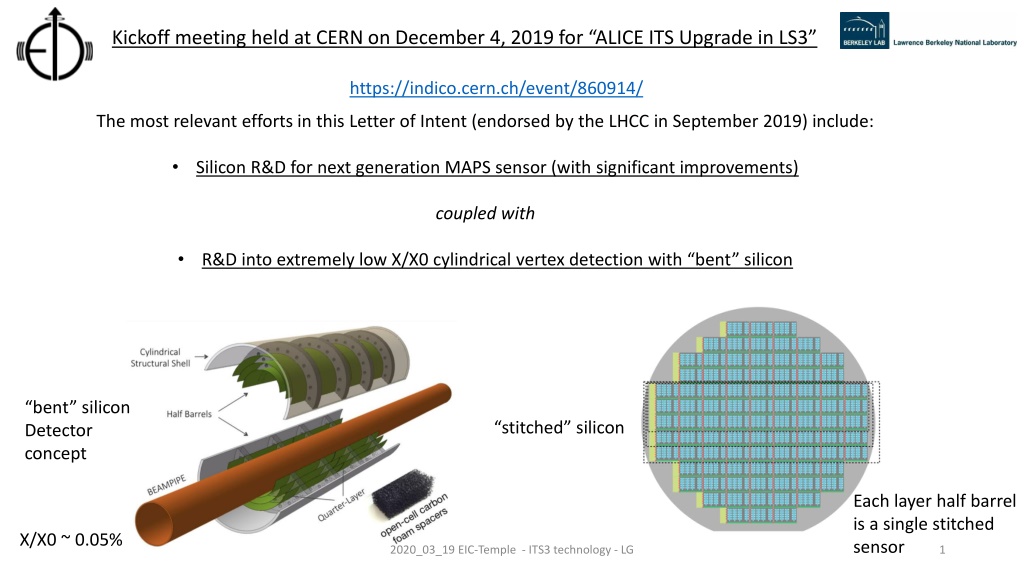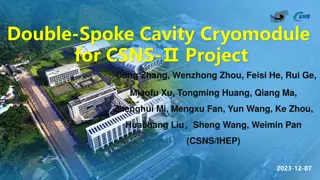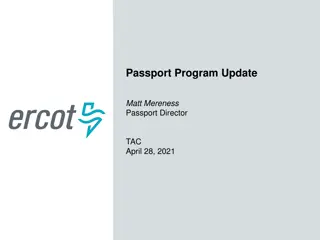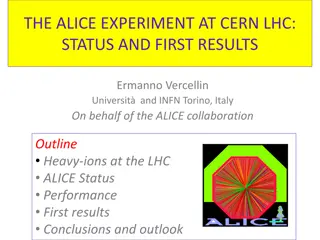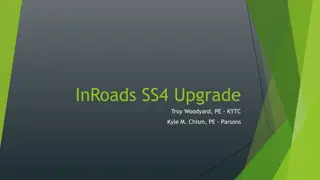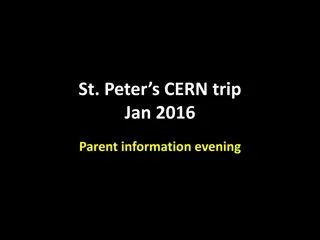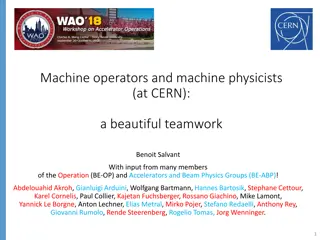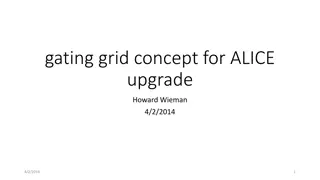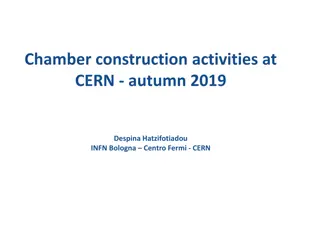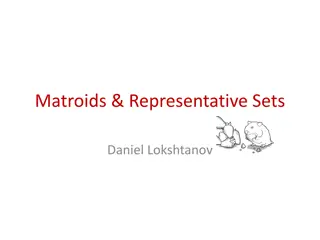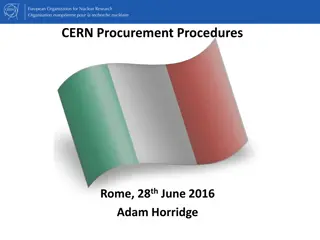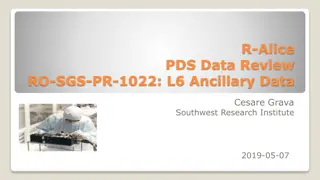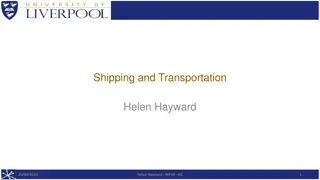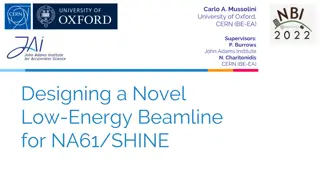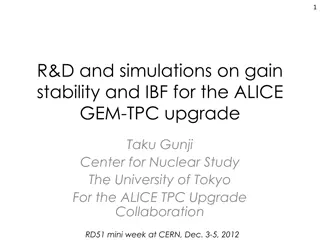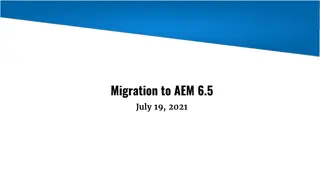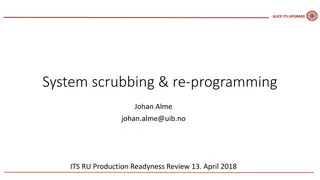Update on ALICE ITS Upgrade Efforts at CERN
Kickoff meeting for the ALICE ITS Upgrade in LS3 was held at CERN on December 4, 2019. The efforts focus on silicon R&D for next-gen MAPS sensor with improvements, low X/X0 cylindrical vertex detection, and a new sensor design. Milestones, organization of efforts, and future plans towards an EIC silicon consortium are outlined. Detailed work packages and goals for physics studies, chip design, characterization, mechanics, cooling, and additional R&D are discussed.
Download Presentation

Please find below an Image/Link to download the presentation.
The content on the website is provided AS IS for your information and personal use only. It may not be sold, licensed, or shared on other websites without obtaining consent from the author. Download presentation by click this link. If you encounter any issues during the download, it is possible that the publisher has removed the file from their server.
E N D
Presentation Transcript
Kickoff meeting held at CERN on December 4, 2019 for ALICE ITS Upgrade in LS3 https://indico.cern.ch/event/860914/ The most relevant efforts in this Letter of Intent (endorsed by the LHCC in September 2019) include: Silicon R&D for next generation MAPS sensor (with significant improvements) coupled with R&D into extremely low X/X0 cylindrical vertex detection with bent silicon bent silicon Detector concept stitched silicon Each layer half barrel is a single stitched sensor X/X0 ~ 0.05% 2020_03_19 EIC-Temple - ITS3 technology - LG 1
New sensor design compared to existing ALPIDE 2020_03_19 EIC-Temple - ITS3 technology - LG 2
Sensor development milestones Pre COVID-19 2020_03_19 EIC-Temple - ITS3 technology - LG 3
Organization of effort for ITS3 ITS3-WP1: Physics studies, Simulation and Reconstruction Physics performance studies Detector functional requirements Detector model and simulation Reconstruction alice-its3-wp1@cern.ch ITS3-WP2: Pixel chip design Test structures and validation of the technology Optimization of the pixel layout Large area building block prototypes Full scale prototypes Final chip ITS3-WP3: Pixel chip characterization Development of hardware and software for the pixel chip characterization Laboratory, Beam and Radiation tests Pixel chip device simulation alice-its3-wp2@cern.ch alice-its3-wp3@cern.ch 2020_03_19 EIC-Temple - ITS3 technology - LG 4
Organization of effort for ITS3 ITS3-WP4: Pixel sensor thinning, bending and interconnection Tests with existing material (ALPIDE wafers) Tests with 300 mm dummy wafers Test with full-scale prototypes Mechanical, electrical and functional validation of the procedures alice-its3-wp4@cern.ch ITS3-WP5: Mechanics and cooling Selection and characterization of carbon materials (structural and thermal properties) Development and production of support structures Development, production and validation of the Engineering Module based on dummy chips Development, production and validation of the Qualification Module based on prototype chips Production of the Final Module based on final chips alice-its3-wp5@cern.ch An EIC effort will require additional effort in R&D EIC WP6: Discs based on ITS3 sensors EIC WP7: Long staves based on ITS3 sensors EIC WP8: Support and cooling for discs and staves +? 2020_03_19 EIC-Temple - ITS3 technology - LG 5
Towards an EIC silicon consortium As already stated, we consider joining the CERN based ITS3 silicon effort as the most likely path so success for developing a sensor that meets the EIC requirements. I have already approached the ITS3 management team and they are quite supportive of having and EIC based contingent in the contributor base. As was described before, the ITS3 project is set up from the beginning to include non - ITS/ALICE/CERN members. A MOU that codifies this is being formed in WP2. There are existing institutions like LBNL, Bari, Trieste, Wuhan and others that are already part of ITS/ALICE who have demonstrated interest in using ITS3 developed sensors for EIC. Other institutions such like Birmingham, RAL, BNL instrumentation, IMPCAS etc. are not part of ALICE/CERN but have a strong interest in an EIC sensor and extensive silicon experience. We are in the process of forming a consortium of institutions to join the ITS3 effort as the primary development for an EIC based sensor. I will be meeting again with ALICE/ITS3 management next week to expand on our plans and get basic information. Any group that feels that they can contribute and is interested in joining this consortium, please get in touch with me. 2020_03_19 EIC-Temple - ITS3 technology - LG 6
